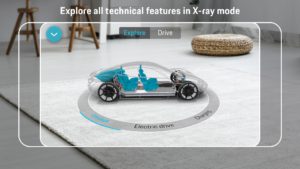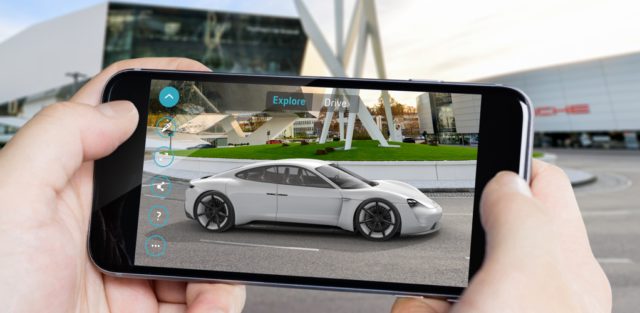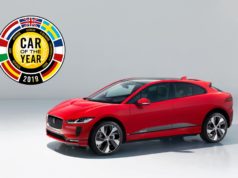Porsche has developed an augmented reality app which shows the new Porsche Mission E as a part of a collaboration with Google. It features different view modes allowing the user to digitally discover the brand’s first purely electric sports car. The app is available now for augmented reality enabled smartphones with Android and iOS operating systems. It is also free to use and download from Google Play or the Apple App Store.
The Porsche Mission E will be on the market by the end of the decade.
 With the new Mission E Augmented Reality app, the sports car manufacturer is already providing innovative access to the electric sports car’s technology
With the new Mission E Augmented Reality app, the sports car manufacturer is already providing innovative access to the electric sports car’s technology
“We are offering our fans a virtual taste of the Porsche brand’s first purely electric sports car,” says Kjell Gruner, Vice President Marketing at Porsche AG. “The augmented reality technology offers us ways to depict complex technical aspects of the new vehicle technology vividly and emotively. It is important to us that our customers can immerse themselves in tomorrow’s technology and convey enthusiasm at an early stage – any time, any place.”
The app allows the user to see different views of the Mission E concept study. The concept vehicle can be virtually present in a room while the augmented reality application provides animations that simulate the vehicle’s aerodynamics, for example. X-ray views bring the drive and battery technologies to life by giving a glimpse beneath the lightweight body. In addition, the vehicle can be displayed virtually in the customer’s preferred colour. It is even possible to go on a test drive using augmented reality in the interactive driving mode.
The new “Mission E Augmented Reality” app allows the user to see different views of the #Porsche #MissionE concept study. More: https://t.co/pkPAuVij8O pic.twitter.com/yRQadfdnvd
— Porsche Newsroom (@PorscheNewsroom) March 20, 2018
The Mission E is the first all-electrically powered four-seat sports car in the brand’s history
The concept car combines the Porsche design with excellent performance and the practicality of the first 800-volt drive system. It has over 600 hp (440 kW) system power and over 500 km driving range. The car also has all-wheel drive and all-wheel steering.
Acceleration from 0 to 100 takes under 3.5 seconds while a charging time of around 15 minutes allows reaching an 80 percent charge of electrical energy. Eye-tracking and gesture control operate the instruments. Some even work via holograms which automatically adjust the displays to the driver’s position.
The Mission E can even portray driving fun. A camera in the rear-view mirror recognizes the driver’s good mood and shows it as an emoticon in the round instrument. The car can save the information together with individual data such as the route or speed. And the driver can share it with friends via a social media link.
A new world based on an innovative display and control concept opens up before the driver. It is intuitive, fast and free of distractions. The instrument cluster shows five round instruments. An eye-tracking system detects which instrument the driver is viewing. The driver can then activate the menu of the instrument in focus by pushing a button on the steering wheel. That also involves an interplay of eye-tracking and manual activation.
The entire dashboard is chock full of new ideas. Its division into two three-dimensionally structuring layers reinforces the impression of lightness and clarity. Driver or passenger can use a touch display on the centre console to control secondary functions such as detailed information menus.
The drive system of the Mission E is entirely new, yet it is typical Porsche, i.e. proven in motor racing
Two permanent magnet synchronous motors (PMSM) accelerate the sports car and recover braking energy. Together the two motors produce over 600 hp, and they propel the Mission E to a speed of 100 km/h in less than 3.5 seconds and to 200 km/h in under twelve seconds. In addition to their high efficiency, power density and uniform power development, they offer another advantage: unlike today’s electric drive systems, they can develop their full power even after multiple accelerations at short intervals.

































